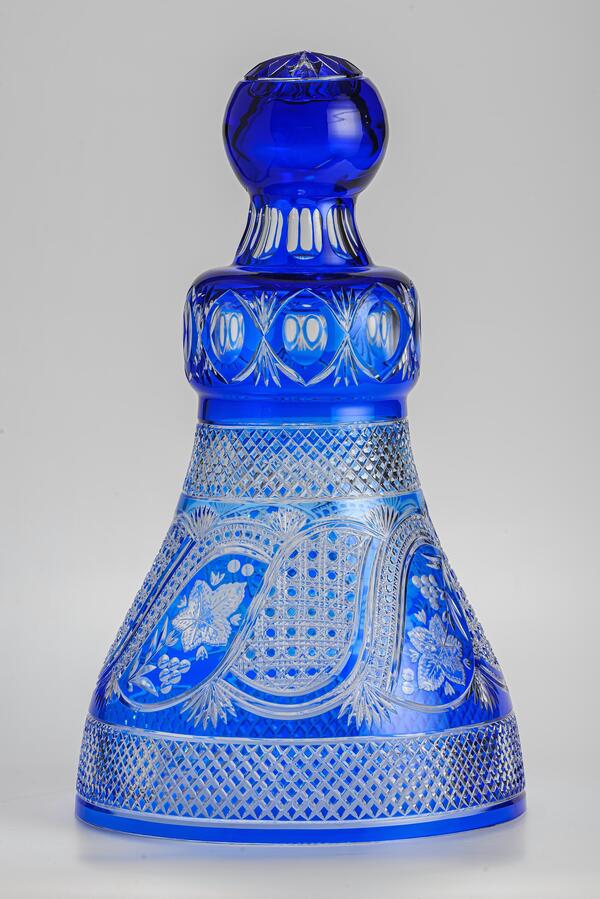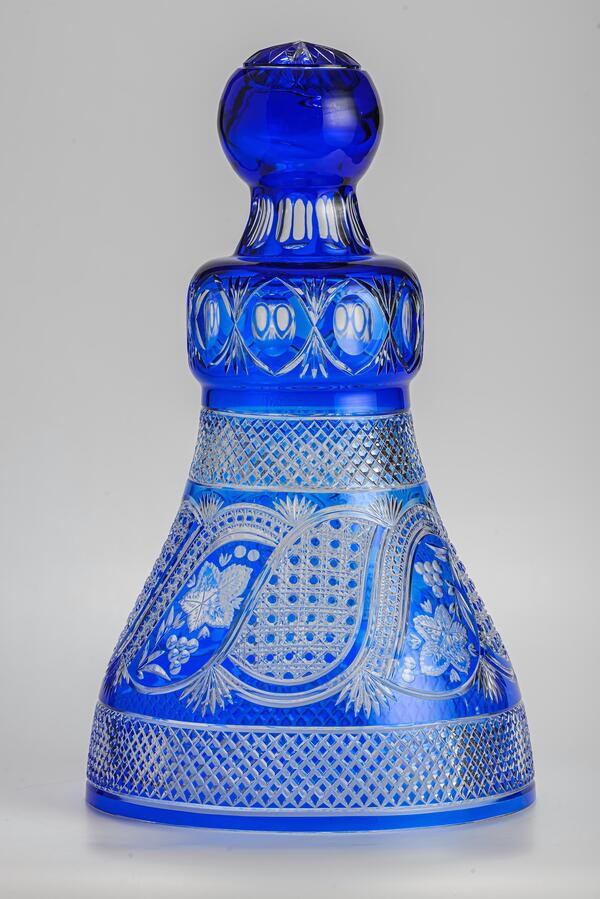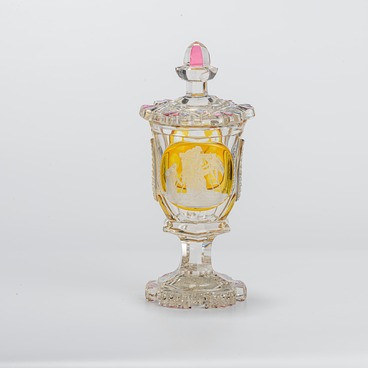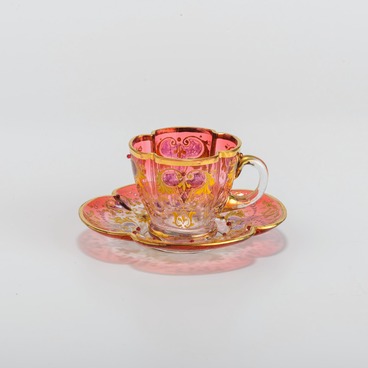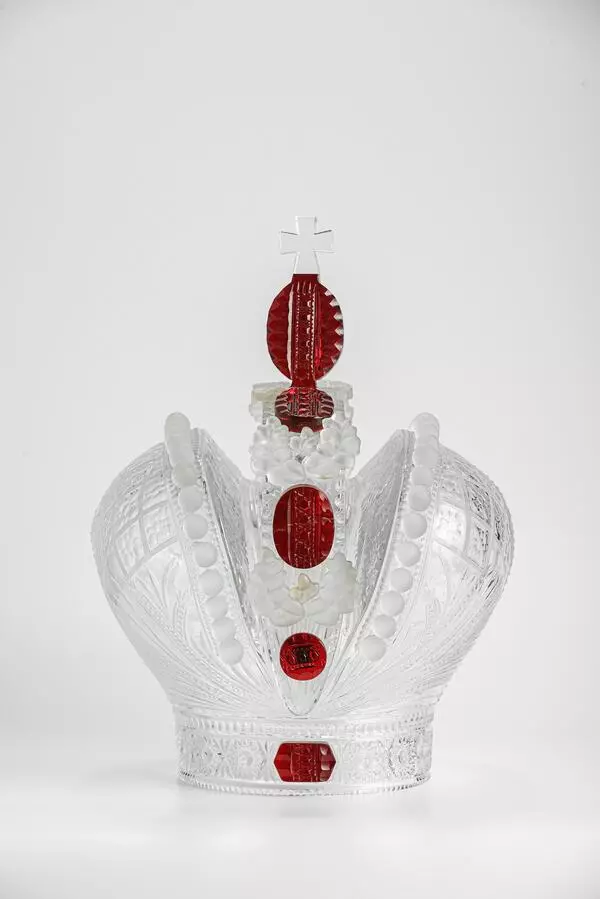The raw material used in the manufacture of crystal glass is a chemical “cocktail” of substances ground into powder. The ingredients are used to make a certain type of crystal glass and include a high percent of lead oxide. The mixture is melted at temperatures above 1,500 Со. First, the glass blower applies a drop of hot mass to the end of the glass tube and blows the product into a mold using a special device — a bulb syringe. The formed object is put in an annealing oven for an hour and a half. During annealing, the temperature gradually decreases from 700 to 40 Со. The more complex and the larger the product is, the more time it needs to be annealed. Only after this stage, artisans begin working with the crystal blank to make it a work of art. Crystal products are decorated by engraving, cutting, carving and polishing.
Engraving enables artists to obtain a shallow matte pattern. A cutter creates a polished facet; a carver creates a diamond-shaped facet. To do this, a grid of markings is used to cut grooves on the surface of the crystal. During this process, the cutter starts working with the largest abrasive disc and finishes with the smallest one. Polishing gives the product a gloss finish.
At the end of the 20th century, the Red Giant factory produced mainly mass-market tableware. At the same time, traditional techniques were still used to create glassware in the experimental art workshop.
In the 21st century, the glass factory took a new direction. The chief artist Viktor Vasilievich Ezhov developed new original designs that were manufactured in small series or even came in a single copy. The factory started producing unique artworks including the presented exhibit. Since 2001, the factory has been producing bells in three different sizes, differing in pattern and color scheme.
The presented bell is one of the joint projects of Viktor Vasilievich Ezhov and the craftsmen Sergey Ezhov (wide cut) and Igor Svinkin (diamond-shaped cut).
The two-layer bell of cobalt crystal is 55 cm high and is decorated with an intricate pattern. It harmoniously combines stylized leaves, vines and diamond-shaped, six- and eight-sided blunt decorations.
The works of the artisan Igor Evgenievich Svinkin display both the best traditions of the “Bakhmetev” school and modern techniques.
Engraving enables artists to obtain a shallow matte pattern. A cutter creates a polished facet; a carver creates a diamond-shaped facet. To do this, a grid of markings is used to cut grooves on the surface of the crystal. During this process, the cutter starts working with the largest abrasive disc and finishes with the smallest one. Polishing gives the product a gloss finish.
At the end of the 20th century, the Red Giant factory produced mainly mass-market tableware. At the same time, traditional techniques were still used to create glassware in the experimental art workshop.
In the 21st century, the glass factory took a new direction. The chief artist Viktor Vasilievich Ezhov developed new original designs that were manufactured in small series or even came in a single copy. The factory started producing unique artworks including the presented exhibit. Since 2001, the factory has been producing bells in three different sizes, differing in pattern and color scheme.
The presented bell is one of the joint projects of Viktor Vasilievich Ezhov and the craftsmen Sergey Ezhov (wide cut) and Igor Svinkin (diamond-shaped cut).
The two-layer bell of cobalt crystal is 55 cm high and is decorated with an intricate pattern. It harmoniously combines stylized leaves, vines and diamond-shaped, six- and eight-sided blunt decorations.
The works of the artisan Igor Evgenievich Svinkin display both the best traditions of the “Bakhmetev” school and modern techniques.

